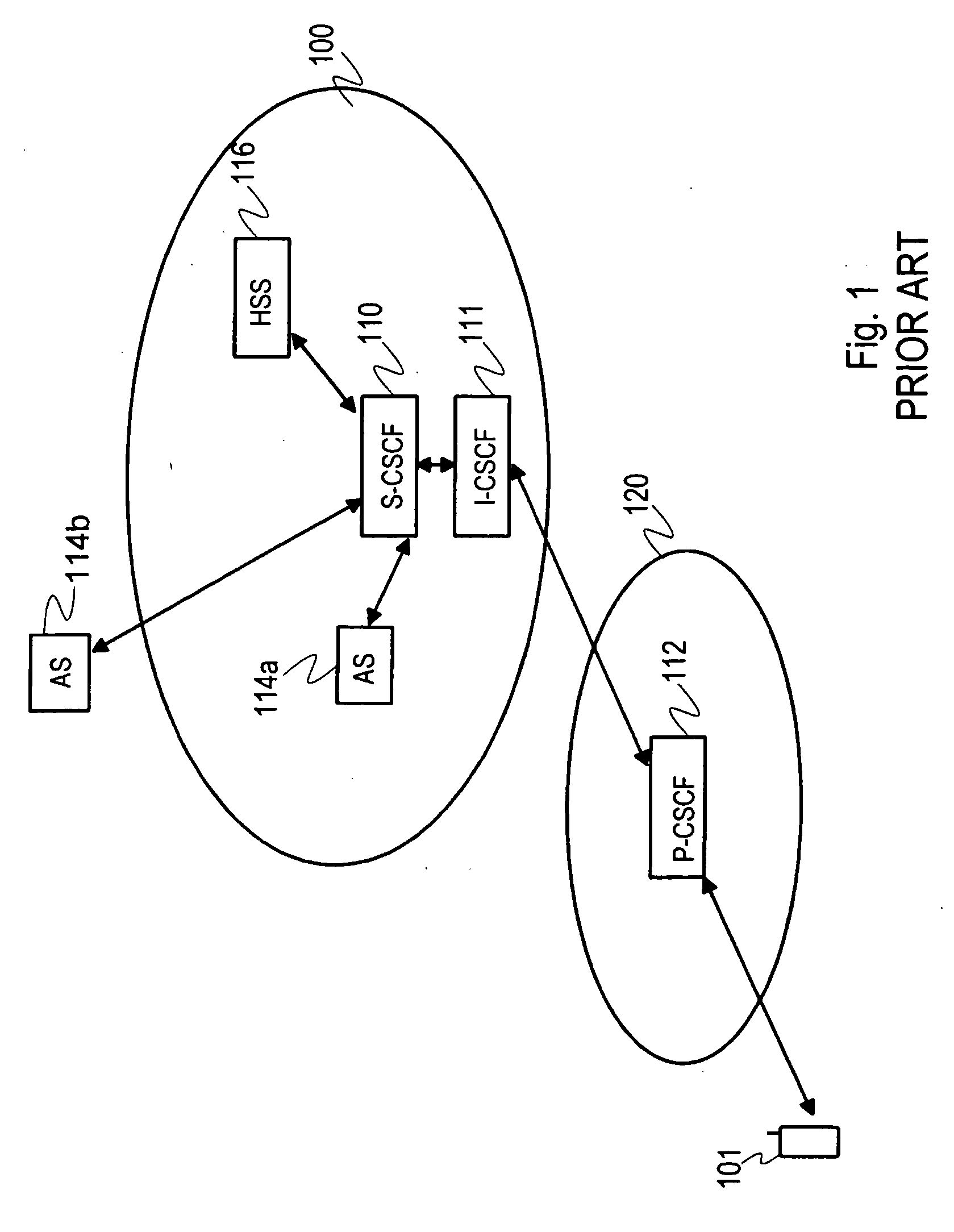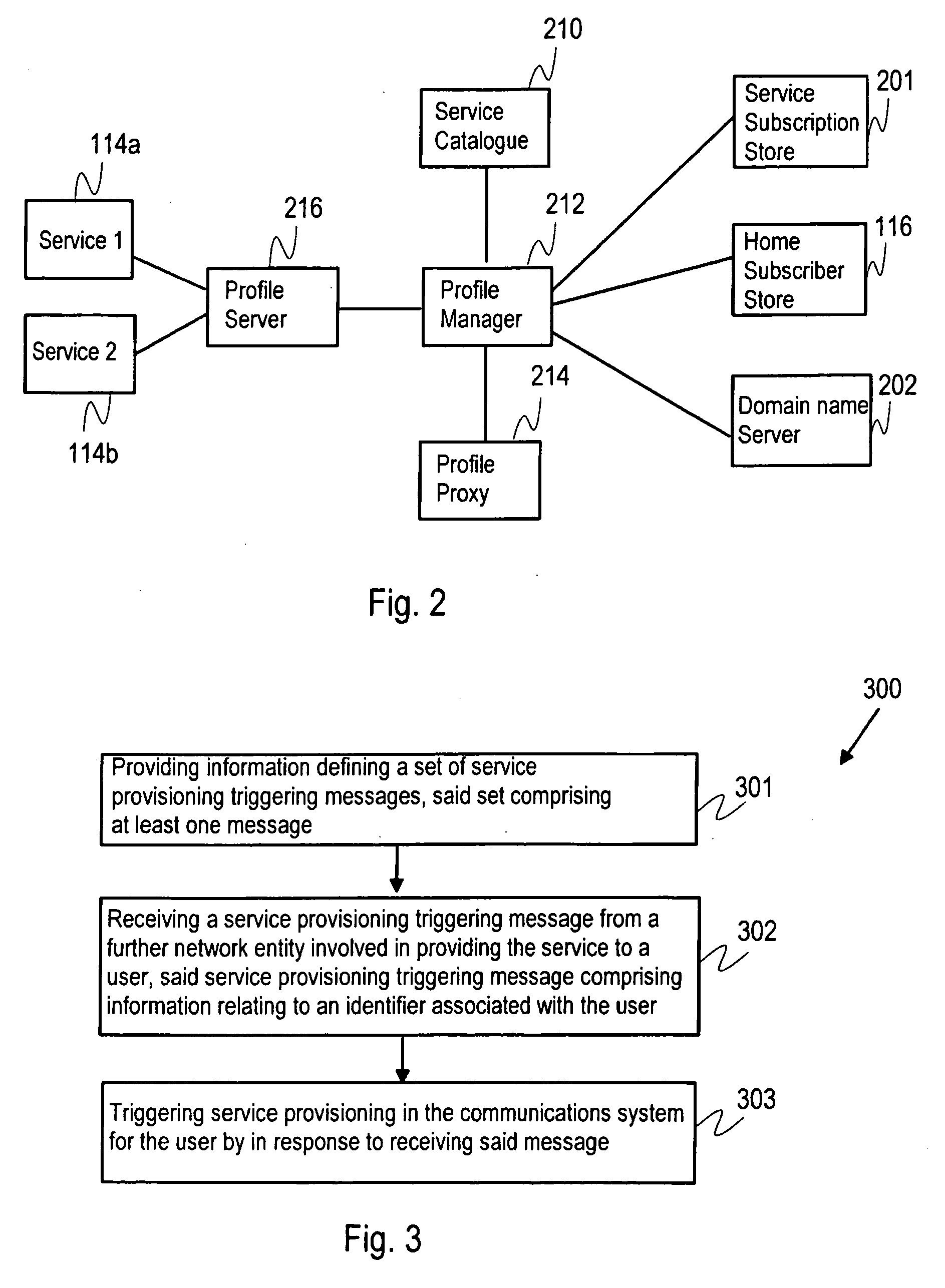Service provisioning in a communications system
a technology of communication system and service provisioning, applied in the direction of digital transmission, data switching network, electrical apparatus, etc., can solve the problems of s-cscf registration failure, request session may not be established, and protocol typically does not function properly
- Summary
- Abstract
- Description
- Claims
- Application Information
AI Technical Summary
Benefits of technology
Problems solved by technology
Method used
Image
Examples
first embodiment
[0111]FIGS. 4a and 4b relate to autoprovisioning in accordance with the invention. FIG. 4a shows, as an example, a situation where a user accesses the IMS service for a first time. The IMS service is generally accessed by sending a registration message (a SIP registration). The situation in FIG. 4 typically occurs when the user sends the registration message for the first time. In FIG. 4a, the user (the communications device 101) sends a SIP registration message (indicated with arrow 401), and session routing is done to the relevant control entity 450, which typically is an interrogating control entity (I-CSCF). The registration message contains an identifier associated with the user. In response to receiving the registration message, the control entity 450 sends a request message (arrow 402) to an information store of the communications system, the request message requesting information about a serving control entity (typically S-CSCF) for the user. Typically this request message i...
second embodiment
[0130]FIGS. 7a and 7b show, as examples, flowcharts of methods 700 and 710 in accordance with the invention.
[0131] The method 700 relates to operation of an information store in a communications system, for example, to a HSS in the IMS. In step 701, information is stored for an identifier associated with a user. This information includes at least trigger information for directing a session of the user to an entity defined by the trigger information. In accordance with the second embodiment, the trigger information defines a service provisioning mediator entity configured to handle service provisioning triggering messages. The information stored in the information store typically contains also information indicating a control entity for the user, for example, a S-CSCF in the IMS.
[0132] In step 702, the information store receives a request 605 for sending trigger information relating to a user indicated in the request. In step 703, the trigger information is sent (arrow 606 in FIG. 6...
third embodiment
[0134] the invention overcomes, for example, the following problems relating to a situation where a subscriber A wishes to have a SIP based gaming session (or any other application session) with a subscriber B. The subscriber B's communication device may not be provided with the required capability for the gaming session. Furthermore, it may be the case that the subscriber B cannot be charged with the gaming session, as only A has been provisioned into a Gaming Server. Therefore, the gaming session cannot be established between subscribers A and B. The problem here thus relates to provisioning an application to an unknown subscriber B automatically.
[0135] In this third embodiment, the communications device of the subscriber B is configured to initiate the required auto-provisioning settings with personalized values fetched from the communications device and typically also from a relating identity module. The auto-provisioning settings may be fetched, for example, via Personal Inform...
PUM
 Login to View More
Login to View More Abstract
Description
Claims
Application Information
 Login to View More
Login to View More - R&D
- Intellectual Property
- Life Sciences
- Materials
- Tech Scout
- Unparalleled Data Quality
- Higher Quality Content
- 60% Fewer Hallucinations
Browse by: Latest US Patents, China's latest patents, Technical Efficacy Thesaurus, Application Domain, Technology Topic, Popular Technical Reports.
© 2025 PatSnap. All rights reserved.Legal|Privacy policy|Modern Slavery Act Transparency Statement|Sitemap|About US| Contact US: help@patsnap.com



